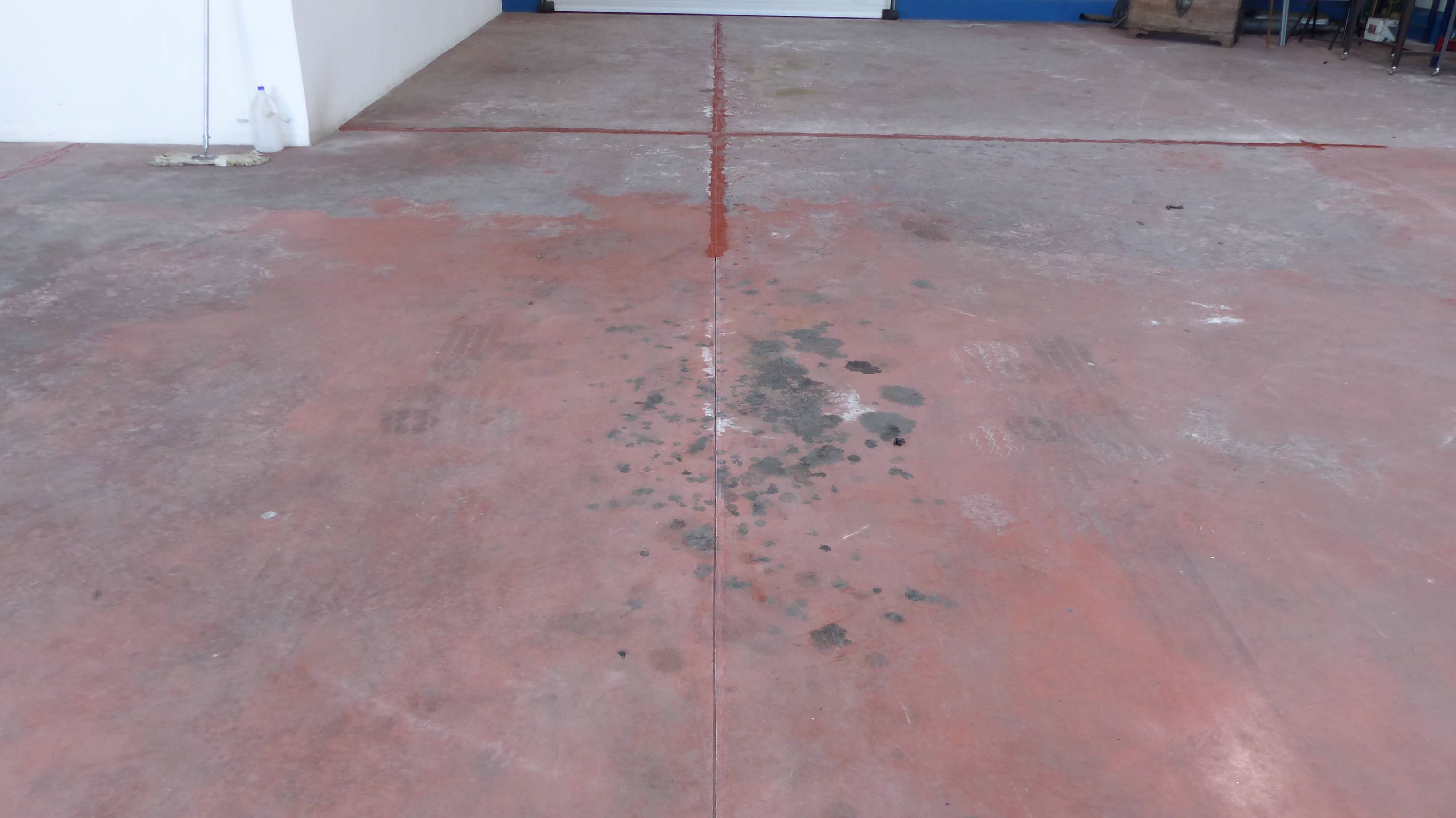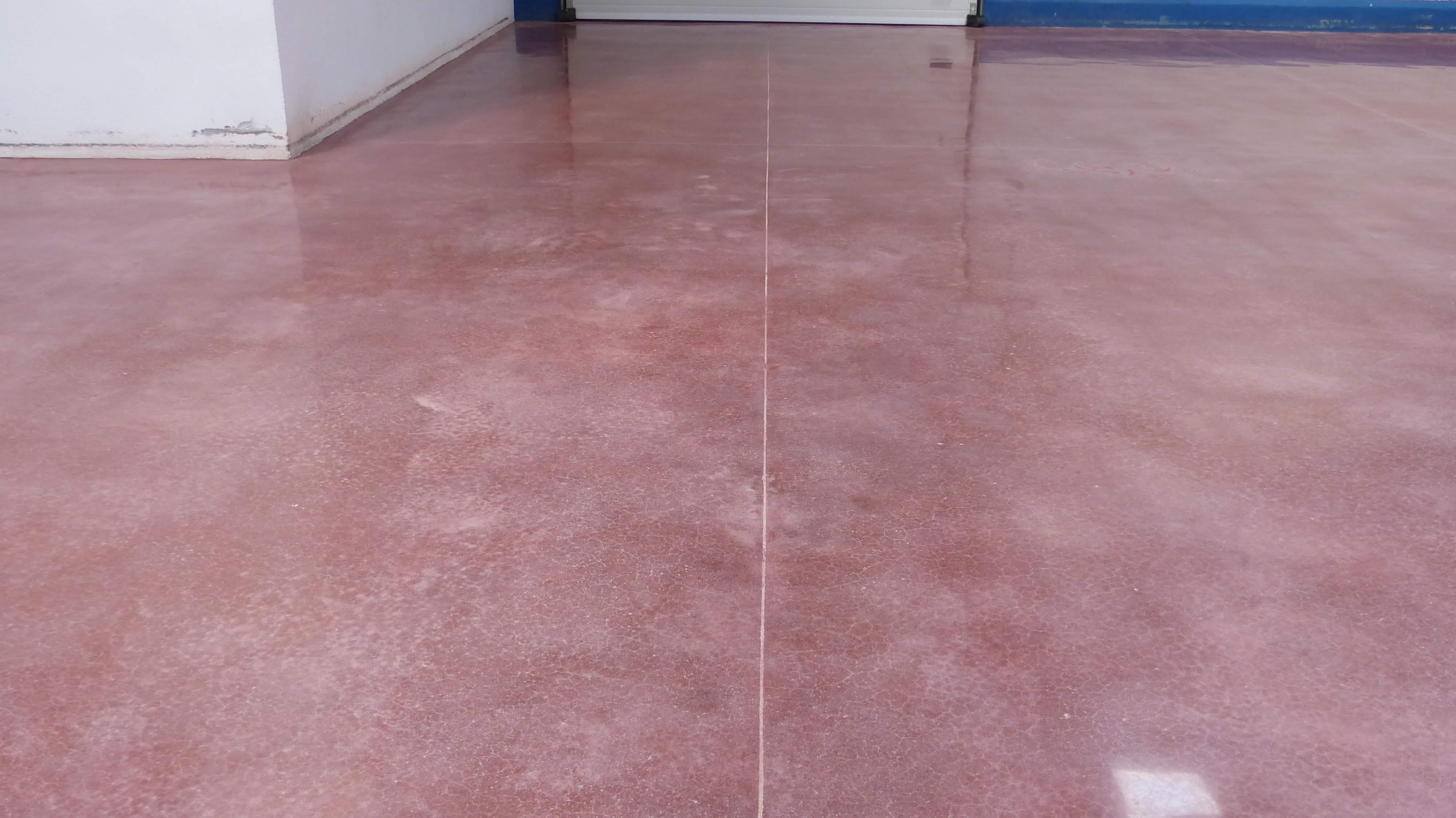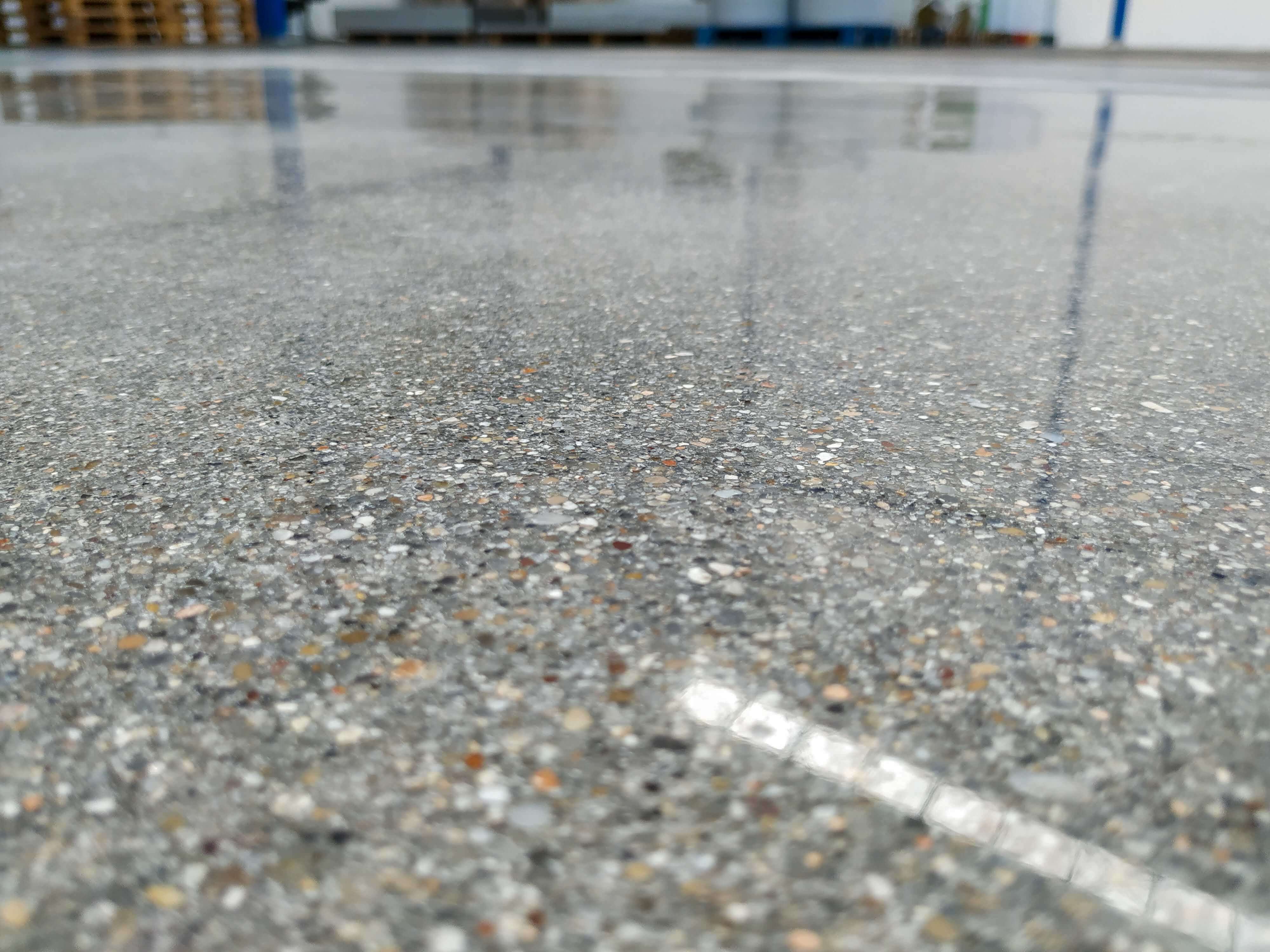The words beautiful and concrete don’t often appear in the same sentence and for obvious reasons. Concrete is associated with being grey, dirty, dusty, dull and ugly.
But it doesn´t have to be this way. It is possible to make even commercial concrete attractive.
Sometimes, it’s advisable to build a more appealing concrete floor that can be for an office block with a large atrium, a shopping centre that will endure millions of visitors or for a large showroom, among other spaces.
It’s in these places where there is a need for a nice looking concrete floor. These are places where a cheaper product can prevail, which makes concrete a suitable product compared to, for example, marble tiles.
So how do we make concrete beautiful?
Coloured concrete
Concrete does not have to be grey – it can be any colour you want; green, blue, red, yellow or even black!
You can access this article where pigmentation techniques in concrete and the pigments necessary to achieve different colours are described.

To produce a coloured concrete simply add a pigment, usually in the form of a powder, to the concrete mix.
The pigment is usually a metal oxide and the market leader is Bayer with their coloured pigment range – Bayferrox.

The ratio of the mix is one part pigment to 25 parts cement.
The colour of the cement is critical in the final colour of the floor.
A traditional grey cement is fine for dark colours but for light colours it is recommended to use a white Portland cement in the concrete mix.
Using aggregate to give texture
The selection of aggregate in the concrete mix can enhance the appearance of a concrete floor. There are the three basic types of effect; Surface Cream, Salt and Pepper and Exposed Aggregate.
Surface Cream
The exposed surface of the concrete is made of a troweled cement paste with sufficient depth so that after polishing no aggregate is exposed. This is very popular and will give the concrete a uniform and consistent colour with no imperfections.
Salt and Pepper
This finish is achieved by using a fine aggregate and only grinding down to the level of the top of the stones. Usually, this requires only about 2mm of grinding.
Exposed Aggregate
Here a visually appealing stone is selected and expose the centre of it by grinding down by up to 6mm in depth.

Care must be taken in the selection of the aggregate to expose. It should have a regular size and have a colour inside complementary to the colour of the concrete.
The most popular decorative aggregates are interesting coloured natural stones such as basalts, granite, quartz, or limestone. One can also use manufactured materials such as recycled coloured glass.
However, stones that contain iron oxides or iron pyrites should be avoided as their colours can leach into the concrete.
Polishing and the BECOSAN® System
If you have a beautiful blue floor with coloured stones embedded within we can enhance the floor further by using the BECOSAN® system.
The BECOSAN® system uses diamond pads to polish the floor to a high gloss finish so that it feels like glass to the touch.
However, it’s still concrete and wear and tear will damage the surface and will produce dust if left untreated. To counteract, BECOSAN® Densifier is applied which binds with the lime in the concrete to make it resistant to abrasion and harder wearing.
Finally we apply BECOSAN® Protective Sealer is applied which makes the floor resistant to liquid spillages.
A concrete floor treated with the BECOSAN® system will last for very many years and will give a surface comparable to any marble floor and at a fraction of the cost.












